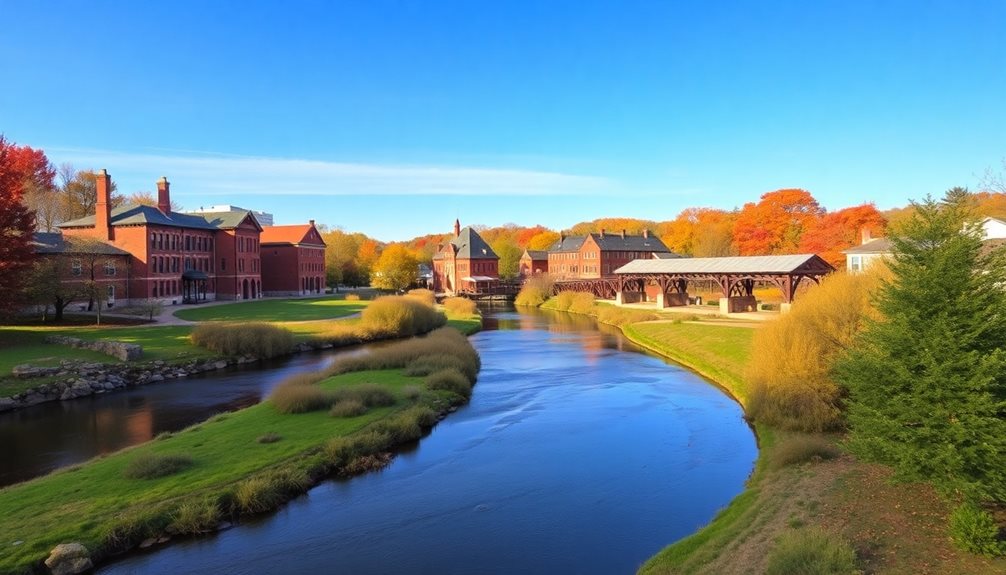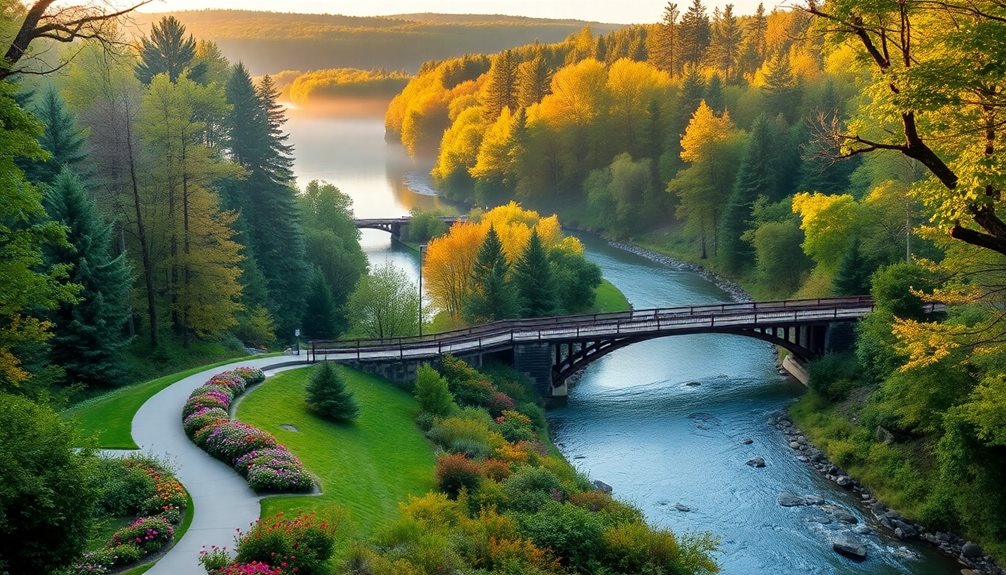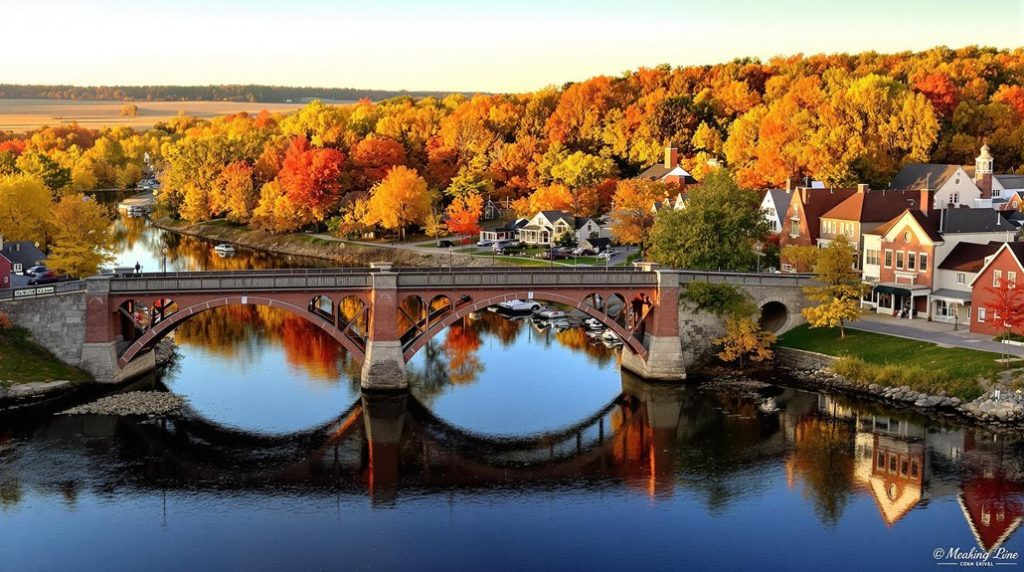Posts Tagged ‘Hanover history’
Hanover MN
Hanover, Minnesota, lies along the Crow River, spanning Wright and Hennepin counties. Historically, it was inhabited by diverse American Indian tribes, including the Dakota. German immigrant Jacob Vollbrecht arrived in 1856, and the village was incorporated in 1891. Today, Hanover thrives as a farming community with preserved architecture. Its location near the Twin Cities offers strategic benefits. To uncover more about Hanover’s attractions and community life, one can explore its rich history and modern developments.
Expert Highlights
- Location and History: Hanover, MN, is located on the Crow River and was originally inhabited by American Indian tribes.
- Founding: Jacob Vollbrecht, a German immigrant, arrived in 1856, leading to its founding.
- Incorporation: The village was officially incorporated in 1891 as a farming community.
- Amenities: Offers scenic parks and community spaces, enhancing outdoor activities.
- Events: Hosts an annual Harvest Festival with a 5K run and Miss Hanover competition.
History of Hanover

The history of Hanover, Minnesota, unfolds as a narrative of settlement and growth, situated on the banks of the Crow River where, once, the only inhabitants were members of diverse American Indian tribes, particularly the Dakota Indians, who utilized the woods and waters for game and resources.
Jacob Vollbrecht, a German immigrant, arrived in 1856, pioneering the area now known as Hanover, named after his hometown in Germany.
The village was officially incorporated in 1891, marking a significant milestone in its development as a thriving farming community.
Today, visitors can discover the charm of this historic riverside town through its preserved architecture and community spirit.
Natural Attraction and Settlement

Hanover, Minnesota, situated along the Crow River, showcases a blend of natural attractions and human settlement that have evolved over time. Natural attractions include parks and riverside scenery, appealing to those seeking freedom in the outdoors. Many residents enhance their properties with concrete driveway installation to maintain the area’s aesthetic appeal while ensuring durability in Minnesota’s climate. Key features are summarized below:
| Attractions | Description | Accessibility |
|---|---|---|
| Crow-Hassan Park | Natural preserve with wilderness trails | Car and on-foot |
| River District | Community space along the Crow River | Pedestrian |
| Orchard Gardens | Local gardens with scenic views | On-foot |
| Riverside Park | Recreational area with green spaces | Easy parking |
| Hanover Settlers Park | Historical site with local significance | Accessible paths |
Community Development and Modern Life

Community growth and infrastructure development in Hanover, Minnesota, are greatly influenced by its strategic location within the Twin Cities metropolitan area and its presence in both Hennepin and Wright Counties.
Developments like Crow River Heights and Bridges At Hanover offer custom-built homes with amenities such as community parks, supporting a blend of rural charm and modern living.
Hanover’s proximity to Maple Grove and Albertville further enhances its appeal, fostering a thriving city center with above-average education options and a scenic Downtown River District along the North Crow River.
Points of Interest and Events
Located in the heart of Minnesota, discussions about points of interest in Hanover necessarily encompass its scenic parks and cultural sites.
Some notable attractions include:
- Crow-Hassan Park Reserve
- Hanover Historical Society of Minnesota
- Cardinal Circle Park
- Hanover Settlers Park
- Le Musique Room
Hanover also hosts events like the annual Harvest Festival, featuring activities such as a 5K run and Miss Hanover competition, which foster community engagement and celebration.
Expert Final Thoughts
Hanover, Minnesota, has evolved markedly since its incorporation in 1891, driven by German settlers like the Vollbrecht brothers. The town’s natural attractions, including the Crow River, supported early farming and craftsmanship. Today, it features historic sites like the 1885 Hanover Bridge and hosts events like the annual Harvest Festival. With a population of over 3,500 as of 2020, Hanover continues to grow while preserving its cultural heritage through efforts by the Hanover Historical Society.

